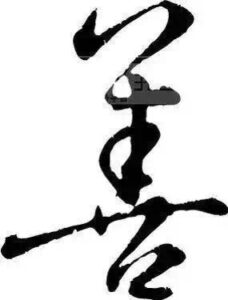The Ox Mountain Parable – Mencius
Posts in the last couple of months have covered thinking on the soul, creativity and beauty – the poet and writer Kathleen Raine draws on these same subjects in her 1966 essay called ‘The Use of the Beautiful’. She sees that beauty has taken in the past innumerable forms and styles and how our response to different manifestations does change, citing how Dorothy Wordsworth saw some Indian sculptures as hideous idols; while Hindu and Buddhist art are now seen as beautiful. Instead, Raine begins to question the issue of where reality for this civilisation is situated; where the physical, and what can be quantified is placed above spirituality, and abstract thought, and what is intellectually beautiful. In our culture the value lies in what can be seen and quantified.
‘I have often found myself wondering why the present age seems positively to shrink from beauty, to prefer the ugly, to feel safer, more at home with it; and I have come to realise that there is a reproach in the beautiful and the perfect; it passes its continual silent judgement and it requires perhaps a kind of courage to love what is perfect, since to do so is an implicit confession of our own imperfection. … it is because the beautiful is too troubling an experience to natural apathy that we avoid it; or one too painful to be endured in a world so out of tune with its order.’
Raine especially rails against television where the viewers and the viewed could change places, and nothing is altered and where people express themselves so that what is ‘true to life’, has come to mean: ‘true to the lowest expression of the lowest intelligence’. Raine may be seen here as being culturally snobbish, but she has an interesting point that if artistic creativity is a true reflection of our civilisation, then what is that civilisation … especially if it is a civilisation thoroughly mechanised, and now in 2023 thoroughly technocratic. If art just reflects back what there is (and how many wonderful poems or paintings have there been of multi-story office blocks or car parks?), then how can artistic creativity add to our knowledge, or transform our consciousness. Raine sees that:
‘Imaginative poetry alone has a real function to perform; for the pseudo-arts of realism perform no function beyond that of endlessly reporting on the physical world; which quantitative science (whose proper function it is) can do very much better. But true poetry has the power of transforming consciousness itself by holding before us icons, images of forms only partially and superficially realised in “ordinary life”’.
The painful thing to read in her essay is her comment on how consciousness contracts and contracts – we forget over and over again, until perhaps recollection is stirred by some icon of that beauty. Thomas Merton uses the Ox Mountain parable to notice the importance of the ‘night spirit; and the ‘dawn breath’ in restoring life to what has been destroyed – and, as in the forest, so with human nature and the spirit – without the spirit we cannot be true to our nature – if our nature rejects the spirit, it is barren and nothing grows from it – no new birth:
Master Meng said:
There was once a fine forest on the Ox Mountain,
Near the capital of a populous country.
The men came out with axes and cut down the trees.
Was it still a fine forest?
Yet, resting in the alternation of days and nights, moistened by dew,
The stumps sprouted, the trees began to grow again.
Then out came goats and cattle to browse on the young shoots.
The Ox Mountain was stripped utterly bare.
And the people, seeing it stripped utterly bare,
Think that the Ox Mountain never had any woods on it at all.
The Ox Mountain parable by Meng Tzu (Mencius) 385 – 302 BC
